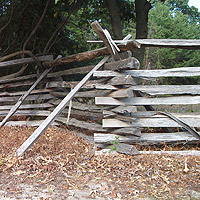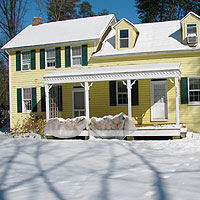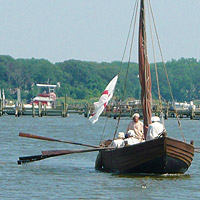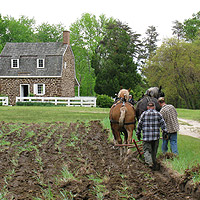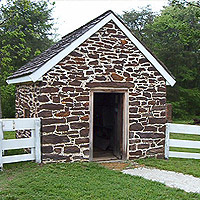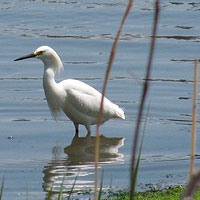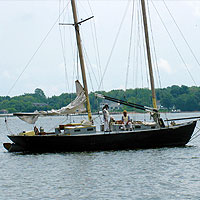
Public Hours
April through October
Sundays 1-4 PM (except Easter)
Extended hours based per event.
Explore
About the Farm
Hancock Family
Photo Gallery
History
Events Calendar
Upcoming:
Open for Tours of the House and Gardens
MOTHER’S DAY TEA AND INTERPRETING HISTORIC WOMENS’ CLOTHING
May Displays
MEMORIAL DAY
June Displays

Christmas on the Hill - 1956
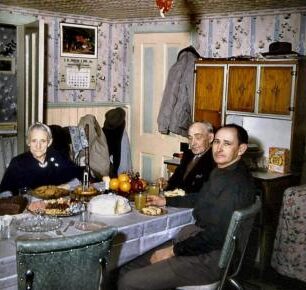
Photo by Philip Cook
When I was young, every Christmas we visited “on the hill”. Great grandmother Cook (Rhoda Virginia Hancock Cook) and Aunt Pansy and Aunt Tillie (after great grandmother’s death) had the kitchen table covered in the most wonderful special treats. We had our choice of fresh coconut cake, walnut cake, or hot milk cake with fudge icing. There were all kinds of special cookies, nuts in the shell, fresh fruits, and punch. Everyone got to go into the parlor and sit and talk. Just before we left, we would go out to the kitchen and have our treats. We only got to go into the parlor on special occasions.
This picture was taken in the Cook house kitchen. The woman on the left is Rhoda Virginia Hancock Cook. The man in the middle is Harry Hancock, her brother. The man on the right is Thomas Clifton Cook, her youngest son. Rhoda Virginia was a strong minded woman. She felt that the house at Hancock’s Resolution was an important historical place. Her brothers and sisters, her children, and her grandchildren were informed on a regular basis that she expected them to see that the house was taken care of and preserved for future generations. Many family members have tried to honor this wish.
